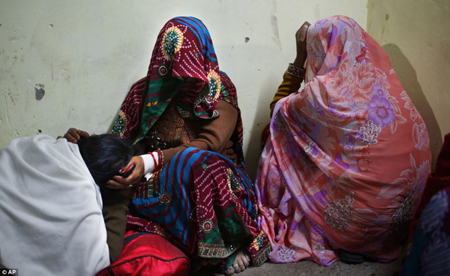
Allahabad, Feb 11: The death toll in the stampede at Allahabad railway station reached 36 today, with 14 more people succumbing to their injuries.
The incident occurred near the foot overbridge on platform number 6. On Sunday, the railway authorities, had refused to confirm the deaths till the filing of the report. The stampede, which took place at around 8.00pm, also left many persons severely injured. Sources said majority of victims killed were elderly persons.
The tragic incident, reports said, took place when more than 1.5 lakh devotees thronged Allahabad junction to board return trains for their respective destinations after Mauni Amavasya Snan. The massive rush of devotees resulted in the breaking of railing on foot overbridge and subsequently the stampede.
NCR chief public relation officer Sandeep Mathur said due to sudden rush of passengers at Allahabad junction the railing of the foot overbridge near platform number 6 broke and in the process many passengers fell from the staircase of the foot overbridge, leading to stampede. He, however, refused to confirm the number of death or critically injured.
Allahabad distict magistrate Raj Shekhar said assured all possible help and treatment to injured persons. Principal, MLN Medical College, Dr SP Singh said seven out of 13 critically injured persons who were earlier admitted at railway hospital were shifted to SRN hospital. He added that 17 injured persons were already undergoing treatment at the hospital.
Eyewitnesses told TOI that none of the senior railway police authorities nor NCR officials came to the spot even as victims cried for help.
Rohit, a passenger, told TOI that the incident was caused by mismanagement. He added that the railway police used light force to manage the crowd but it left an adverse impact and resulted in commotion.
"There was none to hear our grievances and aged people and children were the worst hit when the over-crowding resulted in commotion," said Gayatri, a native of Banda. She added that, "We kept urging GRP and railway authorities for help but none came."
Some angry passengers at the platform misbehaved with reporters when the latter reached the station. Following the incident, railway authorities restricted the entry of passengers at Allahabad Junction.
Rajesh Gupta, a native of Haryana, who lost his sister Babita, 37, in the stampede and himself sustained injuries, told TOI that there was a sudden push of passengers from behind which forced me and others fellow passengers on the staircase. Many fell and got trampled.
Beta Lal, whose wife suffered grave injuries and was shifted to SRN hospital, said, "Due to massive rush of passengers on the foot overbridge, police started chasing away passenger and that led to commotion on the bridge leading to stampede." He added that after the incident, railway authorities did not come to rescue the injured persons.
Another victim, Sunita Jha of Delhi, undergoing treatment at SRN hospital, said, "All of a sudden there was a heavy rush of passengers at the foot overbridge after which things went out of control leading to stampede."





Comments
Add new comment